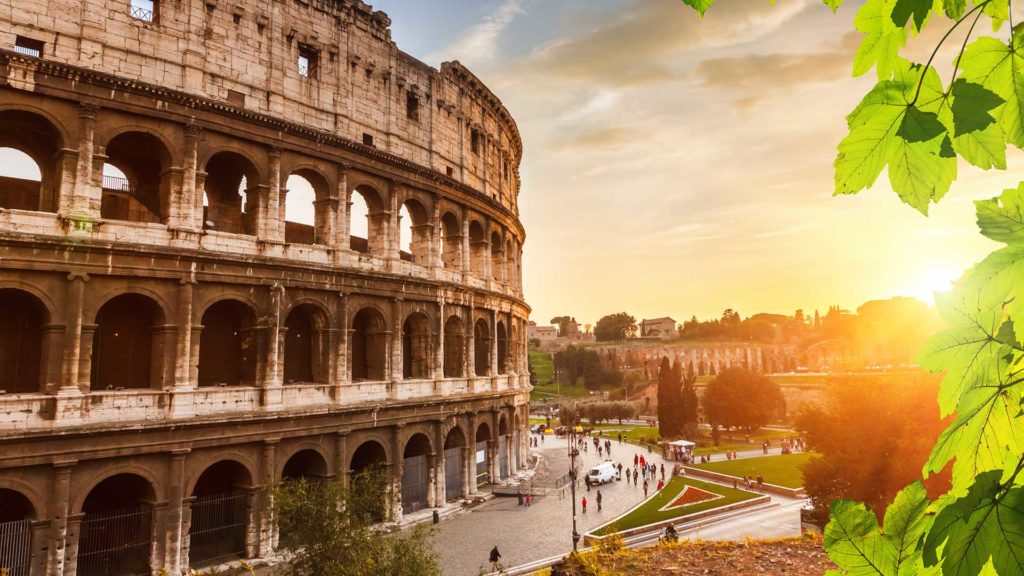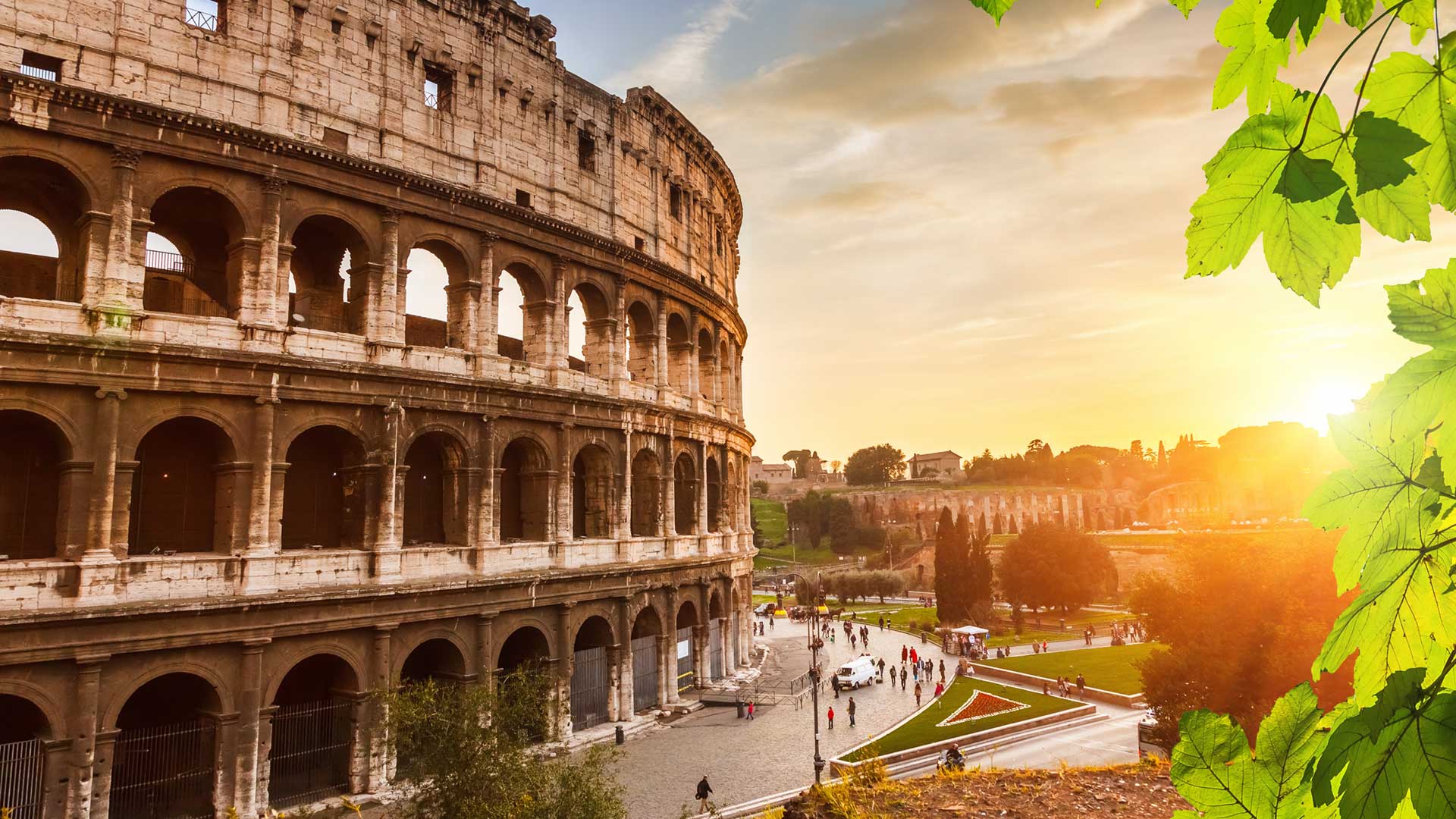HOMEMADE YOGURT
9th November 2019THE SURREAL SUNKEN PARADISE OF KEKOVA
22nd November 2019Rome in February
ROME IN FEBRUARY
Rome was the city of my mother’s dreams. She never made it to Rome but I visited Rome as a member of the jury for PromaxBDA, a contest of international media establishments. I was on the jury and I was really excited.In meetings held in Rome’s national channel RAI, we monitored and evaluated promotions, animations, short videos and designs from all over the world.My creative director accompanied me and besides us, there was only one other Turk, the creative director of FOX Internationals’ promotion department.The first two days were a bit nervy for me because I was going to meet the leaders of the industry for the first time but I was relieved when everyone was very warm and welcoming to me.In the evening, I had great fun visiting Romes’ beautiful restaurants and pubs with my creative director, FOX International’s creative director and the director of the promotion department of the Russian RT channel.The event was only for a day but the whole trip was four days. Hence, I had plenty of time to wander around Rome.
With a history of 2800 years, Rome is in the Lazio region of Italy and is the capital of Italy. With 2.9 million inhabitants, just as many as a neighborhood of İstanbul, it is the most crowded city of Italy and the fourth most crowded city of Europe. The population of the Metropolitan City of Rome, which extends from the Peninsula to the river Tiber, is 4.3 million. Even though the Vatican is within the borders of Italy it is a separate country and the smallest in the world. It is in the UNESCO’s world heritage list. Considered the birthplace of the western civilisation, each corner of Rome has a rich history.
Firstly there were Latins, Etruscans, and Sabins, who then came together to form the Roman Kingdom, then the Roman Republic, and eventually the Roman Empire.
PLACES TO VISIT
Colosseum: The icon of Rome. Emperor Vespasian laid down the first stones in BC 72. It was inaugurated by Emperor Titus eight years later. For 450 years, the amphitheatre experienced the might of gladiator fights. It also hosted wild animal hunts.

Roman Forum: The center of ancient Rome’s politics, commerce, and judicial life. The Arch of Septimius Severus, Temple of Vesta and The House of Vestal Virgins, Curia, Castor and Pollux Temple, Arch of Titus, Maxentius, Constantine’s Basilica, Temple of Vespasian, Temple of Saturn, Temple of Antoninus and Faustina, are some of the most important sites of the Roman Forum. Julius Caesar’s ashes are also here.
Vatican: The Vatican has a population of 800 and it owned by the Catholic Church and administered by the Pope. St. Peter’s Square, St. Peters Basilica, Vatican Museums, Castel Sant’Angelo, and Vatican Gardens are the most important sites of the Vatican.
St. Peter’s Square: Built between 1656-1667 by the famous Italian architect and sculptor Gian Lorenzo Bernini for Pope Alexander VIII, St. Peter’s Square is the beating heart of the Vatican. When you face the basilica there are two fountains in the square the one on the right is the work of Bernini while the left one is of Carlo Maderno. There is a 196 cm intermittent column series surrounding the square. This series contains structures and visual sculptures foreseen by the Papal party and accordingly constructed by Bernini. In the centre of the square, there is a 25.5m high Egyptian standing stone erected by Pope V. Sixtus. This Obelisk was brought from Egypt in 1585.
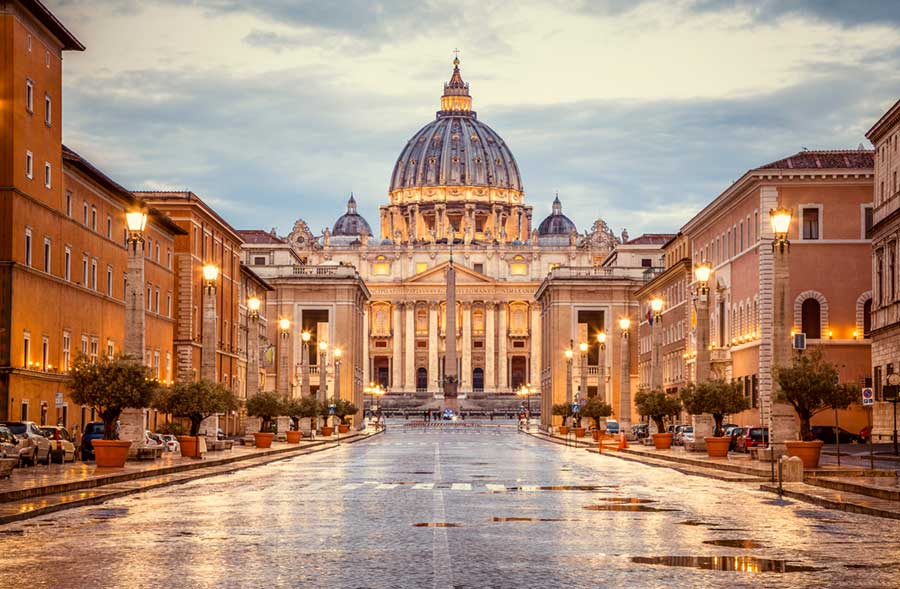
St. Peter’s Basilica: Although it’s the second biggest basilica in Rome, it is the most important basilica in the Christian world. St. Peter, who gave the name of the basilica, was one of Jesus’ 12 apostles and the first Pope. This area was declared a holy place because he was buried here. In 324, the basilica’s founding stones were laid down by Emperor Constantine. It took another 16 years to complete. Renovations were done in the 1500s to give the basilica it’s present spectacular appearance. It can host up to 60,000 people at the same time. Its architects include Donato Bramante, Antonio da Sangallo, Michelangelo, Vignola, Giacomo Della Porta, Carlo Maderno, Gianlorenzo and Bernini. The Renaissance-style church is home to Michelangelo’s lifeless body, the statue of Jesus lying in the arms of Mary called “La Pietà”, and Bernini’s famous ’Baldacchino”. If you go to the dome, all of Rome will unveil itself in front of you. When entering this church, make sure to cover your shoulders and knees.
Vatican Museums: This large complex of many museums is free from 9.00 to 12:30 on the last Sunday of every month but it gets very crowded. There is only one entrance that opens to the Greek and Roman exhibits. There is also the etrush museum, four Raffaello rooms, modern religious art exhibits and the most impressive – the Sistine Chapel. I especially emphasize on the Sistine Chapel, because I have always been curious about the Chapel due to the history and art lessons I took at the university. The Chapel absolutely charmed me. Michelangelo painted the nine creation scenes on the ceiling of the chapel. These scenes describe the process of God creating man and then punishing him for denying God. Especially, make sure you visit the frescoes of “Creation of Adam ”, “First Sin”, “Christ’s Last Supper ”and “The Fall of Man”. I don’t think you can see this kind of craftsmanship anywhere else. These frescoes are wrapped with old and new testament figures. The chapel, known for hosting the papal elections, was built between 1477 and 1481 for the Pope IV Sixtus. Sixtus commissioned Perugino, Botticelli, and Signorelli for painting the chapel. Initially, the ceiling was decorated with gold gilding and painted in blue, and scenes from Moses and Jesus were drawn on the walls. Sixtus’ nephew, Pope II Julius hired Michelangelo to change the blue-gold ceiling used from 1508 to 1512. The decoration of the chapel walls was completed by Michelangelo, who added the Last Judgment on the altar wall between 1534-41.
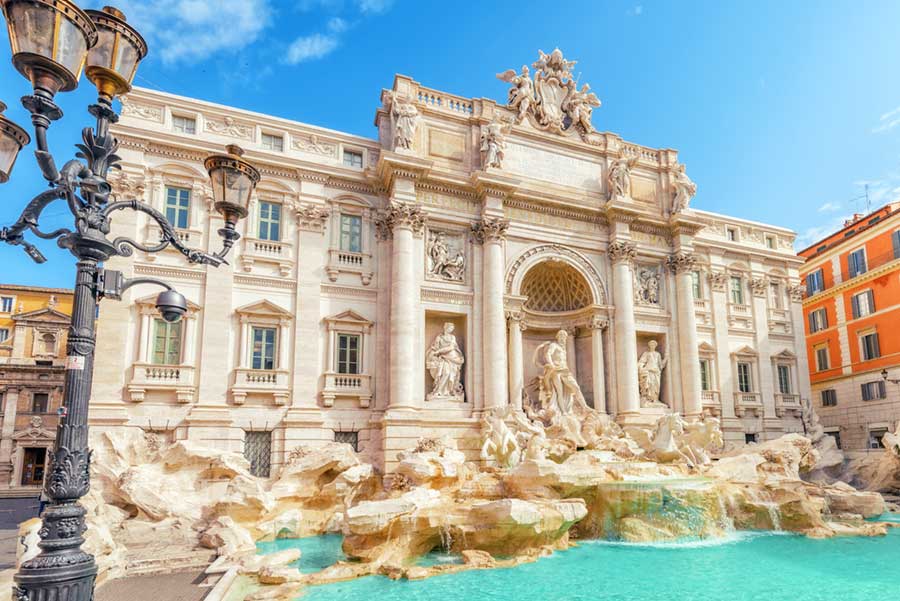
Trevi Fountain: The fountain called “The Fountain of Love” by the Turks is one of the most famous monuments of Rome. The horse figures in the center describe the allegorical expression of plateau’s philosophy of love. The fountain was built by Nicola Salvi under the orders of Pope XII. Clement. The fountain, which was completed between 1732-1735 with the help of many artists from the Bernini school, did not excite me much. But, I threw a coin from the right hand over the left shoulder to follow the tradition that will ensure I will come to Rome again. This tradition is an absolute rip-off. The interesting aspect is that the fountain was built against a wall of the Palazzo Poli. Trevi means “three ways” in Italian and it is believed that this name was given because the three roads that meet at the fountain. The central figure of the fountain, standing in a large niche, is Neptune, the god of sea. He rides a shell-shaped chariot that is pulled by two sea horses. Each sea horse is guided by a Triton. One of the horses is calm and obedient, the other one restive. They symbolize the fluctuating moods of the sea. On the back side lies the goddesses of fertility and health. Evening illuminations add magic to the fountain.
Pantheon: The Pantheon was built in the 25th BC. Built in the name of Jupiter (Zeus), Mars (Ares), Saturn (Kronos), Venus (Aphrodite) and Mercury (Hermes), the Pantheon is also called the Temple of all the Gods. Because of its impressive architecture, this pagan temple was converted into a church. It is believed that the first architect was Marcus Agrippa. The reason being the inscription – “Marcus Agrippa, son of Lucius, having been consul three times made it” – at the entrance. It was reconstructed by Emperor Domition but was struck by lightning and subsequently burned down again. The present version, which has survived almost 2000 years, was built by Hadrian between 118-128 AD. Hadrian reused the original inscription attributing the building to Agrippa which for a while led to the confusion over the exact date of the construction. When the Pantheon was built the only source of light was the oculus in the center of the dome. The opening measures 8.2m in diameter and is referred to as ‘The Eye of the Pantheon’. When he entered the Pantheon, Michelangelo couldn’t believe his eyes: “No, this can’t have been made by a human being.” The arcs in the structure are finished in eight parts and the dome is supported by different arcs. These arcs were used to remove the weight of the building. Since the construction materials at the time were very heavy, lightweight materials were used at the base. The Pantheon is also the final resting place of many kings, painters, and architects. In the chapel to the left of the mihrab, the Renaissance master Raffaello is buried in a Roman sarcophagus. Queen Margherita of the nineteenth century, lays in the chapel next to her husband King I Umberto. On the opposite side of Rotunda (a circular ground plan covered by a dome) United Italy’s first king II. Vittorio Emanuele is buried.
Spanish Stairs: The Piazza di Spagna is one of the most bustling squares in Rome, with staircases to facilitate access to the Church of Trinita Dei Monti. The stairs were designed by Francesco De Sanctis for King XV. Louis between the years of 1723 – 1726. At the bottom of the stairs, there is the fountain called Fontana della Barcaccia and right across it lies the famous shopping street Via Conditti. The construction of the Barcaccia fountain, a bit less spectacular than the other fountains, was started in 1623 by Pietro Bernini and was completed in 1627 by his son Gian Lorenzo Bernini. Due to the low pressure of the water channels, a water leaking boat was used instead of the sprinkler.
The Basilica of Santa Maria Maggiore: This church, one of the most important religious buildings of Rome, has undergone many renovations throughout its history. The ceiling was covered with gold, which was presented to the pope by Queen Isabella of Spain. It is a good example of the combination of different architectural styles. In our world where superstition is intense, there is an intriguing story attached to this church. If you’d believe… According to legend, in 356 AD, Liberio saw the Virgin Mary in his dream. She wanted a church built in her honor in Rome. He was told that they would know where to build it because the snow would fall on that spot. Despite it being a very hot summer in Rome, snow fell the next day on Mount Esquiline, one of the famous Seven Hills. Therefore, the Pope built the church there and dedicated this beautiful structure to the Virgin Mary.
Piazza Navona: Piazza Navona has an eclectic array of cafes, restaurants and souvenir shops. On Sundays, it hosts a market where local artists sell their artworks. In 86 AD, Domitian had a stadium built at the site of the square (Stadio di Domiziano). The stadium was used mostly for athletic purposes, contests of wit and physical fitness. The stadium was a grand edifice, which had a rectangular shape with rounded short sides. It was completely covered in white marble and could seat up to 30,000 people. There are still remains beneath the square. The stadium was paved over in the 15th century by Gian Lorenzo Bernini for Pope Innocent X and the Piazza Navona was created. Today, the part of the square that is divided into the pedestrian area is the playground of the stadium and the buildings around it are the seats of the stadium. There are three fountains in the square, the most notable one is the Four Rivers Fountain, which has been designed in 1651 by Gian Lorenzo Bernini for Pope Innocent X, it represents four gods of four major rivers of the four continents. This beautiful fountain has been chosen after a competition that Pope Innocent X announced. It is built around a slender Egyptian obelisk surmounted by a dove, a symbol both of the church and the papal family. The fountain represents the four great rivers known in the world at that time. The Nile in Africa, The Ganges in Asia, The Danube in Europe and The Río de la Plata in America. Each of the rivers is represented by a naked figure surrounded by flora, fauna and other symbols specific to each particular area.

Castel Sant’Angelo: Castel Sant’Angelo, named after Pope Gregory the Great’s vision of St Michael is one of the most important structures of Rome. It was built in 139 AD as the mausoleum of Hadrianus and his family and it was the tallest building at that time. The building, which was converted into a castle in the Middle Ages, was used as the residence of the popes and provided the pope with a secret passageway between the Vatican and the castle, which was made in 1227 and referred to as Vatican Corridor “Passetto”. Cem Sultan, son of Fatih Sultan Mehmet (Fatih the Conqueror), was taken captive here for almost five years. Nowadays Castel Sant’Angelo in Rome is a museum and it is one of the major tourist attractions. The Sant’Angelo castle is divided into 6 levels. The chamber of ashes stored in Sala Delle Urne, the staircase of Alexander VI, Sala Paolina decorated with Perino Del Vagas’ and Pellegrino Tibaldis’ fresco between 1544-1547 are highlights of the castle. Also, if you climb to the top of Castel Sant’Angelo you can see a breathtaking panorama on the Terrazza dell’Angelo, the St. Angel Terrace where Flemish sculptor Peter Verschaffelt’s large bronze statue of St. Michael, cast in 1752, rises from a base of travertine. Hadrian bridge is just located in front of the castle. The 10 angel statues on the bridge are made of travertine by Gian Lorenzo Bernini and his students, and they symbolize the stories of Jesus’ crucifixion.
Altare Della Patria: Also known as the Vittorio Emanuele II Monument, it sits between the Piazza Venezia and the Capitoline Hill. The monument built in honor of Victor Emmanuel II, the first king of the unified Italy, was built by Giuseppe Sacconi between the years of 1885 and 1911. Its design is a neoclassical interpretation of the Roman Forum. The monument is built of white marble from Botticino, Brescia and it features stairways, Corinthian columns, an equestrian sculpture of Victor Emmanuel and two statues of the goddess Victoria riding on quadrigas. Also, there are two fountains – Le Fontaine dei Due Mari (The Fountains of the Two Seas). The fountain on the left represents the Adriatic, with the lion of San Marco. On the right is the Tyrrhenian, with the wolf of Rome and the siren Partenope, which symbolizes the city of Naples. Many buildings such as the Tower of Paul have been removed during the construction of this monument. From the top terrace, you can enjoy a view of Rome. The base of the monument holds the Museum of the Risorgimento; a museum dedicated to the unification of Italy in which weapons, flags and other objects related to this historic moment are exhibited.
Palazzo Venezia: This place is located on the west side of Piazza Venezia. Built between 1455 and 1464 by Venetian Cardinal and Pope Pietro Barbo later named as Pope Paul II., Palazzo Venezia was the first of Rome’s great Renaissance palaces. Nowadays, it’s home to the Museo Nazionale del Palazzo Venezia and its eclectic collection of Byzantine and early Renaissance paintings, ceramics, bronze figures, weaponry, and armor. The Palazzo Venezia served as the embassy of the Republic of Venice in Rome until the Italian state acquired the property in 1916. Capitalizing on this modern and ancient symbolism and the useful open space, Piazza Venezia was the location of public speeches given by the Italian dictator Mussolini to his supporters between 1920-1940. I didn’t visit it but those who have the time may prefer to visit.
Villa Borghese: I could say that I found the fresh air here that I miss in Istanbul. It is the most popular park in Rome and covers an area of 1700 acres. It features a number of cafes and walkways. Pincio Gardens, Art Nouveau-style Fontana Dei Fauni (Semi-Human Semi-Goat Forest God Fountain), statues, groves, temples, a water clock Galleria Borghese are among the highlights of the park.
The Campo de’ Fiori (Field of flowers in English): Small but one of the main squares of Rome. It is lively both during the day; with its flower, fruit and vegetable market, and by night; when the terraces are packed with people. In the market, you can find some local products like fruits and vegetables, pasta, spices, and sauces. A great place to experience Italian cuisine. You can visit this popular market until noon every day except Sundays. While you are there, you can’t miss the statue in the middle of the square. The statue is of Giordano Bruno, who was burned at the stake here. He was convicted in 1600 and executed nine days later. What kind of a place would the world be if people had not been persecuted because of their ideas? One of my favorite quote of Bruno is, “God uses good people for dominating his will and the bad people use God for dominating their will”
SHOPPING: Rome isn’t very expensive. Yet, if you want to save some money then January, February, July and September are the best months to visit. You can change your money in banks, at post offices or at “Cambios” (exchange offices) and you can claim your VAT refund of approximately 12% if you spend over 155 EUR in one shop. Italy is famous for its high-quality leather. Gucci, Fendi, Fratelli Rosetti, Bulgari, Hermez, Armani, Campanile, and Ferragamo are the most famous brands. If you are interested in brands such as Laura Biagiotti, Prada, Valentino, Versace, Dolce & Gabanna, Roberto Cavalli, Sorello Fontana, Fendi, Salvatore Ferragamo, Renato Balestra, Giorgio Armani, and Roberto Capucci, Rome will be a paradise for you. Also, Battistoni, Etro, Ermeqildo Zegna, Davide Cenci, Brioni, and Trussardi are the leading brands for men’s clothing. Laura Biagiotti, Missoni, and Choses de Cachemire are best known for their knitted cashmere and loose clothes. You can find all those brands on Via Condotti Street. Via del Corso has more budget brands. It is a great place filled with bargains and wonderful items to buy. You will come across a lot of shoemakers there. Just because I don’t like luxury brands and prefer boutique shops, I fell in love with Via cola di Rienzo Street. Even though we were in Via cola di Rienzo street, we missed the traditional carnival that includes parades, readings, live music, and fireworks in February. I disliked the confetti or “coriandolis” on the floors. In this carnival, children dress in their favorites costumes, the pastry shops fill with delicious regional treats, and the city holds festivals to delight and amuse both children and adults. The aim is to welcome the spring with full color. Hopefully next time I’ll witness this carnival. You can visit Via Borcagnana, Via Bocca di Leone and Via del Babuino for exclusive shops, Via Dei Coranari and Via Marqutta for its antique shops, Via Nazionale and Via Dei Giubbonari for bags, suitcases, sports products, and bookstores. On Sundays, you can find many markets on the streets. These are called “Mercato alimentare”. From these markets, you can buy illustrated artworks of renaissance and baroque period, hand-crafted ceramic products, clothing, pasta, vintage goods, antiques, and souvenirs. These street markets run from morning to 2 pm, don’t miss them! Another shop that you shouldn’t miss is Castroni. It is actually a grocery store but their products are perfect. We bought pasta, some sauces, olive oil and lots of freshly grounded coffee and all of the items were delicious, especially the coffee was marvellous. They have lots of branches all around Rome but we preferred the one close to Via cola di Rienzo. It is the biggest branch and closest to our hotel. Apart from Castroni, you can also shop from Fratelli, Roscioli, Franchi, and Cocu that is more like Sainsbury’s. I don’t like shopping malls so I can’t suggest any if there is one in Rome.
FOOD: You can purchase any kind of food from the shops called “Alimantari”. Cheese (famous brands are Casabianca and Casa dei latticini Miracci), pasta, ham, salami, sausage, porcini mushroom, olive oil, olive, chocolate, and coffee are the main foods of Italy. Also never leave Rome without eating “Gelato”. Keep yourself away from the bubbly and shiny colored ones because they are artificial. Keeping the “Artiginale” trend, always prefer the organic ones. One of the well-known gelato shops is Fatamorgana but it was too touristic. We preferred Ciampini because their ice creams were more organic and it was less touristic. If you are around the Vatican, you may go to Gelateria Dei Gracchi, their ice creams are also organic and homemade. Chocolate+rum and pistachio are their popular ice creams. Apart from those shops, in Rome, there are also Dei Gracchi, Della Palma, The Baskin Robbins of Rome, Giolitti and Gelateria del Teatro. Rather than its ice cream Gelateria del Teatro is more famous for its iced coffee called “Granita”. I recommend Gusto for the best pizza. We ordered “Pizza Ciliegina” and Falconi Chardonnay Variatale d’italia love them both. Their address is Piazza Augusto Imperatore 9, 00186, Rome. Other than Gusto, you can eat meatballs at La Maisonnette Ristrot or if you prefer pasta you can try Taverna Dei Fori Imperiali. As a starter don’t forget to order Bruschetta, a garlic bread topped with tomato and olive.
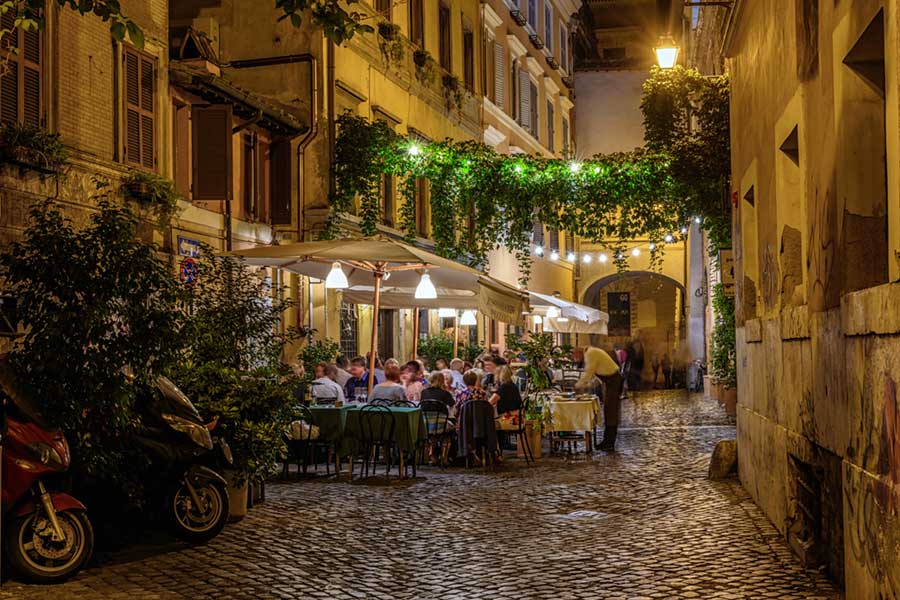
ENTERTAINMENT: Trastevere is where the nightlife goes but keep your expectations low because the streets are too narrow and there is a bohemian feel. Don’t expect any big clubs but enjoy your time at little restaurants where you can eat and drink.
TRANSPORTATION: You can use the three day Roma pass for all your transportation needs as well as to enter two museums and archeological sites. But, the pass isn’t required because like most European countries, you can walk everywhere in Rome. Transportation from the airport to the city center only costs 14 EUR, I suggest Leonardo Express that you can take off at Termini then take a train to your destination. A taxi is a reasonable option if you are three or more.
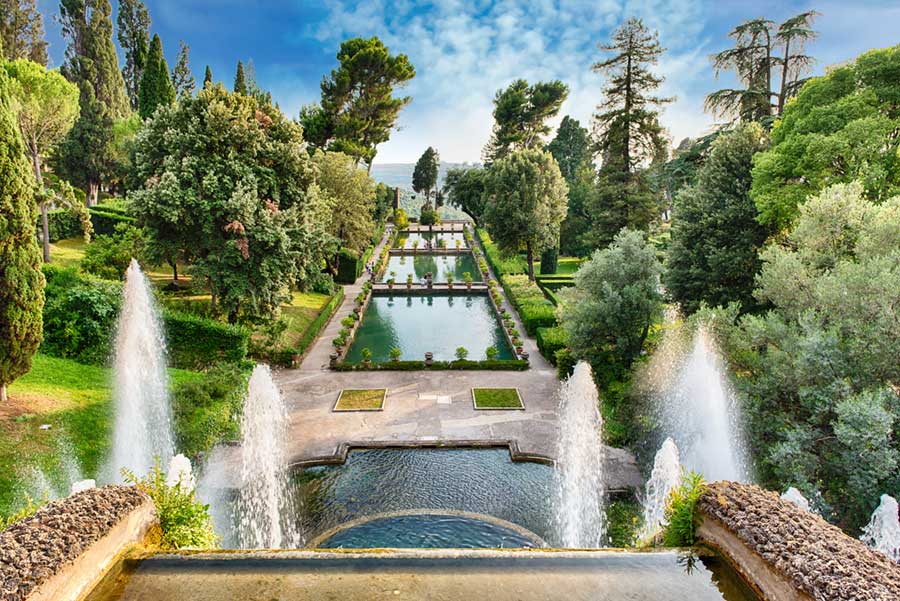
ESCAPING TO THE TOWN: In every country that I visit, I prefer to see its towns to deeply understand the roots of the culture. In Rome, we visited Tivoli, a quaint and lovely medieval town 30 kilometers (19 miles) north-east of Rome. You can take a bus from Ponte Mammolo. You may prefer to take the train too but it takes longer than the bus. While took the bus there and the train back to see different parts. We got off the bus at the last stop but I wish we would have gotten off two stops before that. The last stop is a large square, there are some cafes around it but it’s quite far from all the main destinations and there is nothing interesting on the way. We couldn’t find anyone who knew English until we reached the centre. The center, we finally started to see a medieval town that we expected to see. When we were strolling around the narrow streets, we heard fascinating melodies of a piano. The highlights of Tivoli are Villa Adriana and Villa Gregoriana but the place you must see is Villa D’este belongs to Cardinal Ipplito II d’Este who comes from a wealthy family and they own almost all of the Tivoli. The Cardinal first wanted to build this castle in Rome but just because it will be more magnificent than all the other buildings in Rome, Pope rejects it. It has a magnificent garden with lots of fountains, waterfalls, fish pools and panoramic views designed by architect and artist Pirro Ligoria. The entrance is 8 EUR. Nowadays, it is an Italian State Museum and a UNESCO world heritage site.
